Related Research Articles

The River is a 1938 short documentary film which shows the importance of the Mississippi River to the United States, and how farming and timber practices had caused topsoil to be swept down the river and into the Gulf of Mexico, leading to catastrophic floods and impoverishing farmers. It ends by briefly describing how the Tennessee Valley Authority project was beginning to reverse these problems.

Henry Dixon Cowell was an American composer, writer, pianist, publisher, teacher and the husband of Sidney Robertson Cowell. Earning a reputation as an extremely controversial performer and eccentric composer, Cowell became a leading figure of American avant-garde music for the first half of the 20th century — his writings and music serving as a great influence to similar artists at the time, including Lou Harrison, George Antheil, and John Cage, among others. He is considered one of America's most important and influential composers.
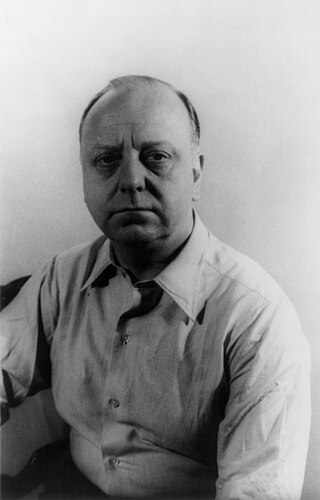
Virgil Thomson was an American composer and critic. He was instrumental in the development of the "American Sound" in classical music. He has been described as a modernist, a neoromantic, a neoclassicist, and a composer of "an Olympian blend of humanity and detachment" whose "expressive voice was always carefully muted" until his late opera Lord Byron which, in contrast to all his previous work, exhibited an emotional content that rises to "moments of real passion".

Howard Harold Hanson was an American composer, conductor, educator, music theorist, and champion of American classical music. As director for 40 years of the Eastman School of Music, he built a high-quality school and provided opportunities for commissioning and performing American music. In 1944, he won a Pulitzer Prize for his Symphony No. 4, and received numerous other awards including the George Foster Peabody Award for Outstanding Entertainment in Music in 1946.

The Turangalîla-Symphonie is the only symphony by Olivier Messiaen (1908–1992). It was written for an orchestra of large forces from 1946 to 1948 on a commission by Serge Koussevitzky for the Boston Symphony Orchestra. Along with the Quatuor pour la fin du temps, the symphony is one of the composer's most notable works.
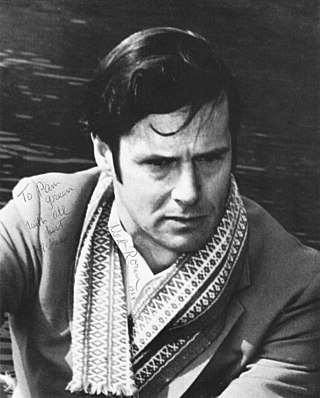
Ned Miller Rorem was an American composer of contemporary classical music and a writer. Best known for his art songs, which number over 500, Rorem was considered the leading American of his time writing in the genre. Frequently described as a neoromantic composer, he showed limited interest in the emerging modernist aesthetic of his lifetime. As a writer, he kept—and later published—numerous diaries in which he spoke candidly of his exchanges and relationships with many cultural figures of America and France.
The Symphony in C is an orchestral work by Russian expatriate composer Igor Stravinsky.

Charles Ives's Symphony No. 4, S. 4 was written between 1910 and the mid-1920s. The symphony is notable for its multilayered complexity—typically requiring two conductors in performance—and for its large and varied orchestration. Combining elements and techniques of Ives's previous compositional work, this has been called "one of his most definitive works"; Ives' biographer, Jan Swafford, has called it "Ives's climactic masterpiece".
George Frederick McKay was a prolific modern American composer.
The Symphony No. 2 in D-flat major, Opus 30, W45, "Romantic", was written by Howard Hanson on commission from Serge Koussevitzky for the 50th anniversary of the Boston Symphony Orchestra in 1930, and published by Carl Fischer Music.
Walter Piston's Concerto No. 1 for Violin and Orchestra was written in 1939 and dedicated to violinist Ruth Posselt. Posselt, backed by the National Orchestral Association under Léon Barzin, gave the first performance at Carnegie Hall on 18 March 1940.
Concerto 4-3 is a concerto for two violins, double bass, and orchestra in three movements by the American composer Jennifer Higdon. The work was commissioned for the string trio Time for Three by the Philadelphia Orchestra, the Pittsburgh Symphony Orchestra, and the Wheeling Symphony Orchestra. It was first performed in Philadelphia on January 10, 2008, by Time for Three and the Philadelphia Orchestra conducted by Christoph Eschenbach.
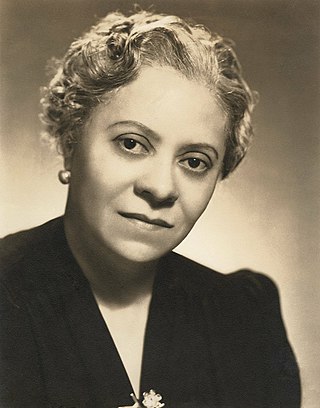
The Symphony in E minor is the first symphony written by the American composer Florence Price. The work was completed in 1932 and was first performed by the Chicago Symphony Orchestra under the conductor Frederick Stock in June 1933. The piece was Price's first full-scale orchestral composition and was the first symphony by a Black woman to be performed by a major American orchestra.
Orchestral Set No. 2 is the title of a three-movement work by the American composer Charles Ives. A typical performance lasts around seventeen minutes. Composed between 1915 and 1919, it represents musical reminiscences of the composer. Like its predecessor, the First Orchestral Set, Three Places in New England, it was not conceived as a single entity but rather assembled from separate compositions.
The Symphony No. 1 is a symphony for orchestra by the American composer Elliott Carter. The work was originally completed in Santa Fe, New Mexico on December 18, 1942, though Carter later revised the work in 1954. It was first performed on April 27, 1944, by the Eastman-Rochester Symphony under the direction of Howard Hanson at the fourteenth annual Festival of American Music. The piece is dedicated to Carter's wife.
The Symphony No. 6 is an orchestral symphony in six movements by the American composer Howard Hanson. The work was commissioned by the New York Philharmonic under the direction of Leonard Bernstein for the orchestra's 125th anniversary. It was composed in 1967 and was given its world premiere on February 29, 1968, by the New York Philharmonic conducted by Hanson.
Symphony No. 3 (1938) is a symphony in four movements composed by American composer Howard Hanson (1896–1981). The first three movements were finished in 1936, a revision in 1938 added the finale movement to the symphony. A typical performance time is approximately 36 minutes. The work, commissioned by the CBS Symphony Orchestra, was written in commemoration of the 300th anniversary of the first Swedish settlement in Delaware in 1638.
Pilgrims and Pioneers is a symphonic poem written by the American composer Virgil Thomson. The music was originally composed as a score to the one-reel immigration film Journey to America, which was made for the 1964 New York World's Fair by Thomson's frequent collaborator John Houseman. However, Thomas later adapted the music for concert performances under the title Pilgrims and Pioneers. This version was first performed by the Mozart Festival Orchestra conducted by Baird Hastings on February 27, 1971.
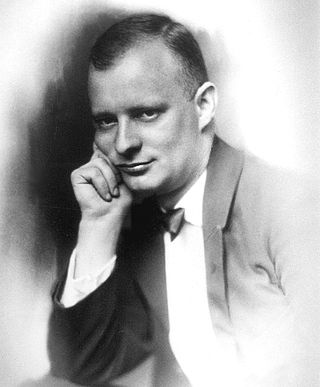
Klaviermusik mit Orchester, Op. 29, is a 1923 piano concerto by Paul Hindemith. Subtitled Klavier nur linke Hand, it is a piano concerto for the left hand alone. It was commissioned by the pianist Paul Wittgenstein, who lost his right arm in the World War. He never played the piece, and when he died, his widow refused access to the score. The premiere, after her death, was played in Berlin in 2004, with Leon Fleisher as the soloist and the Berlin Philharmonic conducted by Simon Rattle. It was published by Schott.
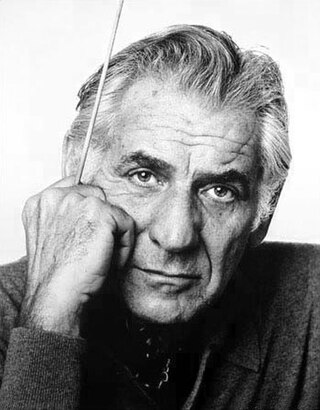
Divertimento, or Divertimento for Orchestra, is a suite of eight orchestral bagatelles by American composer Leonard Bernstein. Completed in 1980 and written to celebrate the centenary of the Boston Symphony Orchestra, it is well-known for featuring the notes B and C in most of its melodic material.
References
- 1 2 3 4 5 6 Tommasini, p. 152-156
- 1 2 3 4 Ledin, Marina; Victor, Ledin (2000). THOMSON, V.: Symphonies Nos. 2 and 3 / Symphony on a Hymn Tune (CD liner note) (Media notes). Naxos Records.
- 1 2 Oja, Carol J. (August 20, 2013). "Symphonic For The People: The Mid-Century American Symphony". NPR . Retrieved March 1, 2015.
- 1 2 Rhein, John von (August 20, 1989). "Virgil Thomson: Symphony on a Hymn Tune, Symphony No. 2..." Chicago Tribune . Retrieved February 9, 2015.
- ↑ Valiunas, Algis (February 2, 2015). "Notes and Music: The words of Virgil Thomson, composer and critic". The Weekly Standard . Archived from the original on January 23, 2015. Retrieved March 1, 2015.
- ↑ Stuever, Hank (May 11, 2016). "'Convincing catastrophe': What The Post's TV critic wrote about 'The Day After' in 1983". The Washington Post . Retrieved September 13, 2017.